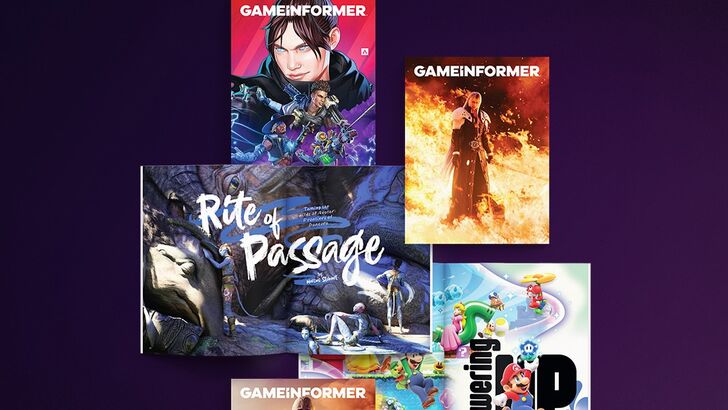 GameStop's decision to shutter Game Informer, a gaming journalism giant with a 33-year history, has sent shockwaves through the industry. This article explores the announcement, the magazine's legacy, and the emotional reactions of its staff.
GameStop's decision to shutter Game Informer, a gaming journalism giant with a 33-year history, has sent shockwaves through the industry. This article explores the announcement, the magazine's legacy, and the emotional reactions of its staff.
Game Informer's Final Chapter
The Announcement and GameStop's Actions
On August 2nd, Game Informer's Twitter (X) account delivered the devastating news: immediate closure of both its print and online operations. This abrupt end to a 33-year run stunned fans and professionals alike. The announcement acknowledged the magazine's journey from the early days of pixelated gaming to today's immersive experiences, thanking readers for their unwavering support. While the print run ceases, the spirit of gaming fostered by Game Informer will endure.
The magazine's staff, including those working on the website, podcast, and online documentaries, received the news in a Friday meeting with GameStop's VP of HR. The immediate closure and subsequent layoffs, with details on severance to follow, left employees reeling. Issue #367, featuring Dragon Age: The Veilguard, becomes the final edition. The website's complete removal, redirecting all historical links to a farewell message, effectively erases decades of gaming history from the internet.
A Look Back at Game Informer's History
 Game Informer (GI), a monthly publication featuring video game articles, news, strategy guides, and reviews, debuted in August 1991 as an in-house newsletter for FuncoLand. Its acquisition by GameStop in 2000 (following GameStop's purchase of FuncoLand) marked a significant turning point.
Game Informer (GI), a monthly publication featuring video game articles, news, strategy guides, and reviews, debuted in August 1991 as an in-house newsletter for FuncoLand. Its acquisition by GameStop in 2000 (following GameStop's purchase of FuncoLand) marked a significant turning point.
The online presence, Game Informer Online, launched in August 1996, providing daily news and articles. Justin Leeper and Matthew Kato joined as full-time web editors in 1999, only to see the original site close around January 2001 as part of the GameStop acquisition. Both later joined the magazine's editorial team.
GI Online returned in September 2003, boasting a redesigned interface, a review database, frequent updates, and exclusive content for subscribers.
 A major website redesign launched in October 2009, coinciding with a magazine redesign. New features included an improved media player, user activity feeds, and user review capabilities. The popular podcast, "The Game Informer Show," also premiered at this time.
A major website redesign launched in October 2009, coinciding with a magazine redesign. New features included an improved media player, user activity feeds, and user review capabilities. The popular podcast, "The Game Informer Show," also premiered at this time.
GameStop's struggles, fueled by the decline of physical game sales, ultimately hampered Game Informer. Despite a meme-stock surge, GameStop continued job cuts, including recurring layoffs at Game Informer. After removing physical copies from its rewards program, GameStop recently allowed direct subscriber sales, hinting at a potential spin-off or sale – a hope dashed by the sudden closure.
The Outpouring of Grief from Employees
 The abrupt closure has left employees heartbroken and shocked. Social media became a platform for expressing disbelief, sorrow, and frustration over the lack of notice. Former staff, some with decades of service, shared memories and lamented the loss of their contributions. Statements of support poured in, including one from Konami acknowledging Game Informer's impact on the gaming industry.
The abrupt closure has left employees heartbroken and shocked. Social media became a platform for expressing disbelief, sorrow, and frustration over the lack of notice. Former staff, some with decades of service, shared memories and lamented the loss of their contributions. Statements of support poured in, including one from Konami acknowledging Game Informer's impact on the gaming industry.
Former staff members voiced their concerns about the sudden closure and the loss of their work, highlighting the lack of warning and the emotional toll on those who dedicated years to the publication. The observation that a ChatGPT-generated farewell message closely resembled the actual announcement further fueled the sense of impersonal corporate decision-making.
 Game Informer's closure marks a significant loss for gaming journalism. For 33 years, it served as a cornerstone of the gaming community, providing in-depth coverage and shaping the narrative of the industry. Its demise underscores the challenges facing traditional media in the digital age, leaving a void that will be felt by readers and the industry alike. While the publication is gone, its legacy will undoubtedly continue to resonate within the gaming community.
Game Informer's closure marks a significant loss for gaming journalism. For 33 years, it served as a cornerstone of the gaming community, providing in-depth coverage and shaping the narrative of the industry. Its demise underscores the challenges facing traditional media in the digital age, leaving a void that will be felt by readers and the industry alike. While the publication is gone, its legacy will undoubtedly continue to resonate within the gaming community.









